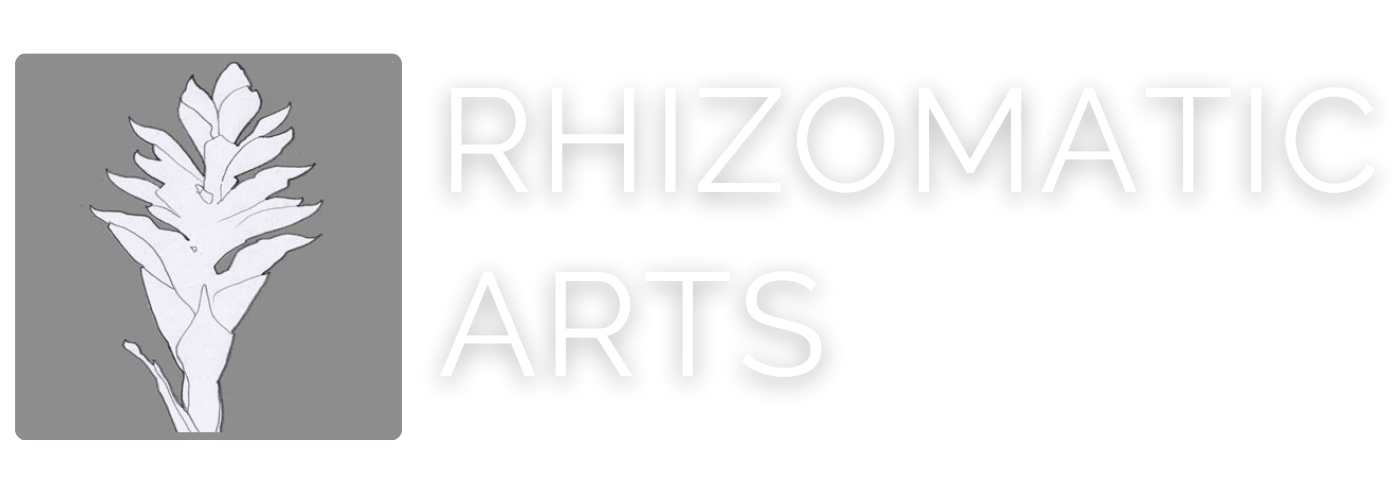Artist Spotlight #16: KATELYN DORROH
Rhizomatic Arts spotlights artists whose creative practices push us to think differently about how we live and work. KATELYN DORROH self-describes as "a collective making art in Los Angeles. Their practice at this time consists of exercising accountability for the privilege they have, the resources they have access to, and to act expansively to the structures of power in which they exist. Dorroh has worked as a preparator, studio assistant, fabricator, line producer, and custom framer.”
Thanks for making time to talk to us today, Katelyn. How would you describe what you do in the world?
I try to use what I have in every facet of my being to shape change.
You self-describe as a “collective.” How does the idea of collaboration manifest in your creative process?
In truth, collaboration is extremely complex. There’s a definition of collaboration that this group [Rhizomatic Arts] often uses, where different individuals intentionally share what they have to benefit each other (and hopefully others that are not part of the group as well). That is the ideal.
But then there are also negative, even unconscious, collaboration with the oppressive structures that both exist around us, and in us. I identify as a They/Them/Their for several reasons, one reason is that there is no such thing as having one singular identity. We are, “individually,” really ecosystems. Identities within are often in conflict with each other. Some are internalized from our surroundings and wish to do us, and others, harm. We all have to acknowledge those entities, assess their character, and collaborate within ourselves just like we would collaborate with other collectives in other bodies. We have to be knowledgeable of how we collaborate and with whom and what we collaborate.
My recent artwork concerns these types of unintentional, oftentimes internal, collaborations. If we can be aware of them and act accordingly, we can be a more responsible beings in the world and better artists.
In addition to encouraging peer-exchange (as you describe), Rhizomatic Arts supports artists in their pursuit of a more holistically sustainable work-life. What would a sustainable career look like for you?
I would like for everyone, including myself, to be able to work and not have to focus so much on meeting their basic needs, and for individuals to not be bound to massive, irreconcilable debt. I would like for our society’s excess to be spent bringing higher quality of life to all.
I am interested in making culturally relevant work that isn’t liberal lip service and actually attempts to achieve real cultural equity/exchange. Making work that actually will matter to others ensures the work’s sustainability.
(W)hole by Katelyn Dorroh. Courtesy of the artist.
How do you see your field changing over the next 10 years? What do you want to see more of?
There are several looming issues that seem to be swelling up and ready to burst. I think undeniable ecological shifts will change us and virtually every aspect of our society, including the artwork we make and how we make it. The student loan debt crisis that most of my friends with MFAs are grappling with cannot continue, especially when we consider the job market they’re entering upon completion.
I want to see more POC in leadership positions and taking up A LOT more space in not just in art, but everywhere. Since I’m not financially able to monetarily fund other people's work, I regularly volunteer my time and abilities to my radical POC artists and their projects. I, sadly, am not always able to show up, but if I’m there and helping it means I really believe in you and your work.
What’s on the horizon for you?
Lots of amazing changes are happening in my life. The most prominent project at the moment is I will be the artist in residence at Shoebox Projects at The Brewery between January 21 and March 3, 2019. That residency will result in a solo show, which opens mid-February. This residency will allow me to further realize a series of work I started just after graduating from UC Irvine. This project started as paintings, which I have been calling 1% Brown Paintings. The primary materials used in these works are sourced from the vacuum cleaner contents of multi-million dollar homes in Orange County, California, where I cleaned houses after graduating from UC Irvine. I am interested in furthering my exploration into the link between economic prospecting in both real estate and art, expanding this investigation into other systems where artists operate, and identifying our agency as participants in these systems.


